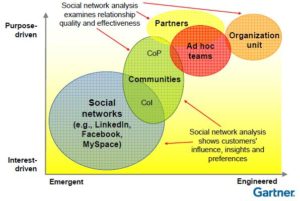John Swainson, CEO of CA, gave a presentation on how Lean can help companies built long-term competitive advantage during tough economic times in industries as diverse as manufacturing, healthcare, retail and IT, and how Lean IT – or what he referred to as the industrialization of IT – can deliver greater value at lower cost. As he pointed out, it’s about time that we applied some discipline to IT, and we can learn from how Lean helped other types of organizations to create just-in-time IT that deploys the right solutions at the right time.
Lean IT is about a “sense and respond” philosophy that has IT paying attention to what’s happening in the business and manage variable volumes, prioritize and create new business services, and ensure ongoing quality levels.
CA commissioned a study on waste, and found that 96% of IT executives agree that there is significant waste in their organization, primarily due to inefficient processes, duplication of effort, redundant applications, and underutilized assets; Swainson sees that the keys to resolving these issues is to analyze, automate, integrate and optimize (respectively).
He was then joined on stage by John Parkinson, CTO of TransUnion. As a credit rating/tracking service that tracks individual consumer credit ratings around the world, IT is absolutely central and critical to their operations, not just a support function. As the recession approached in 2007, however, they had to consider how to grow new sources of revenue and increase operating margins in order to decrease their dependency on the failing consumer credit market. Lean was part of their strategy, helping them to pinpoint the wasted effort and other waste, and allowing them to optimize their operations. With their corporate culture, they needed this to have this be more of a grassroots initiative that made sense to people: adopting Lean since it helped them to do their job better, not because of a corporate mandate. There is, however, monitoring and measurement in place, and performance and compensation are tied to improvements: the ultimate incentive. Their idea is to instill these Lean ideas into their culture, so that these good habits learned in tough times would serve them well when times improve.
Parkinson pointed out specifically that Lean sets you up for taking advantage of cloud computing, and Swainson took over to talk about the opportunities and challenge of working in the cloud. It’s pretty hard to embrace Lean without at least taking a look at using the cloud, where you can provision the right resources at the right time, rather than having a lot of excess capacity sitting around in your data center. Consider non-production environments such as test labs, for example: being able to create test environments as required – either through internal virtualization (which I don’t really consider to be cloud) or in an environment such as Amazon EC2 – rather than having them pre-installed and ready long before required, and sized for peak rather than actual load. Considering that test environments can be 2/3 or more of the server footprint, this is huge.
Mike Gilpin joined them for a discussion, which briefly continued on the topic of using virtualized or cloud test environments, but also covered the issues of how well contract IT employees can adapt to Lean cultures (if they don’t, then find someone else), using other techniques such as Six Sigma together with Lean (they’re all tools focused on process optimization, pick and choose what works for you), and the security challenges of using cloud infrastructure.

